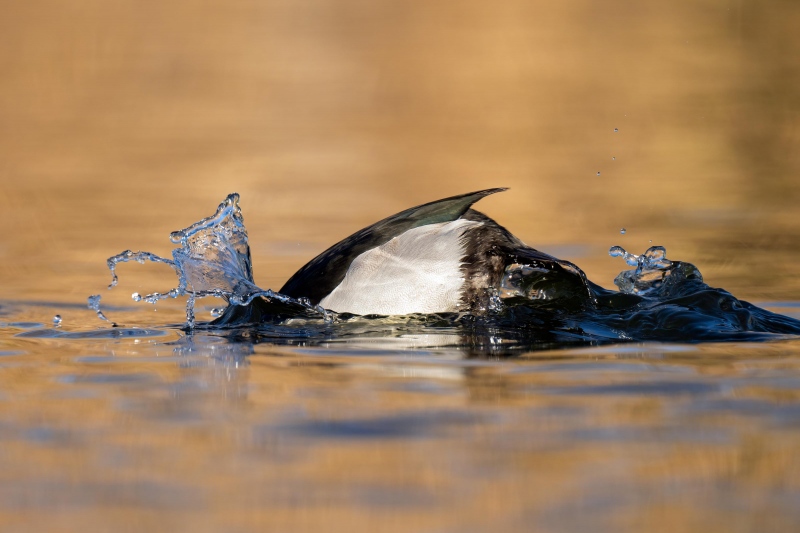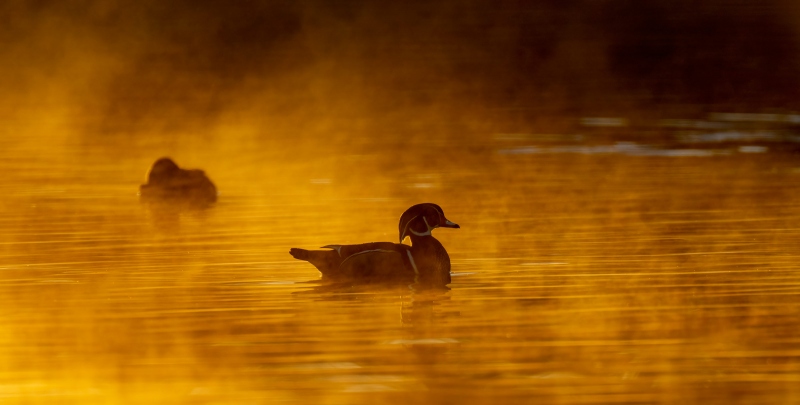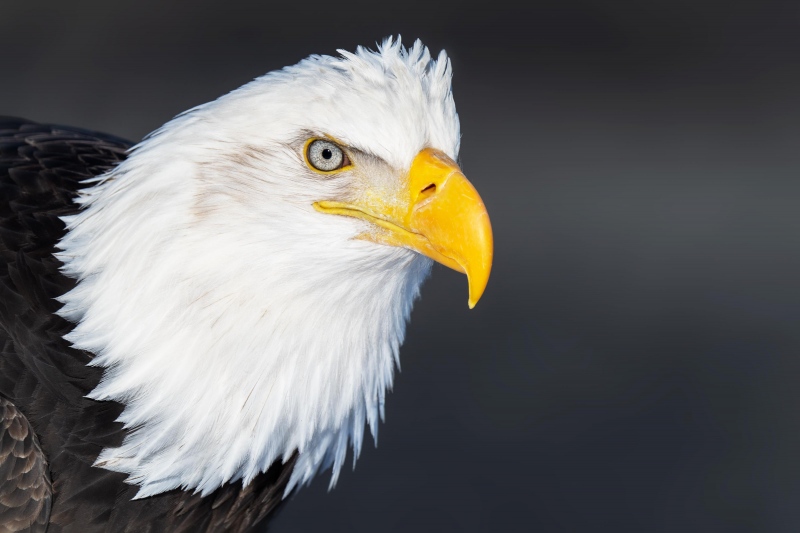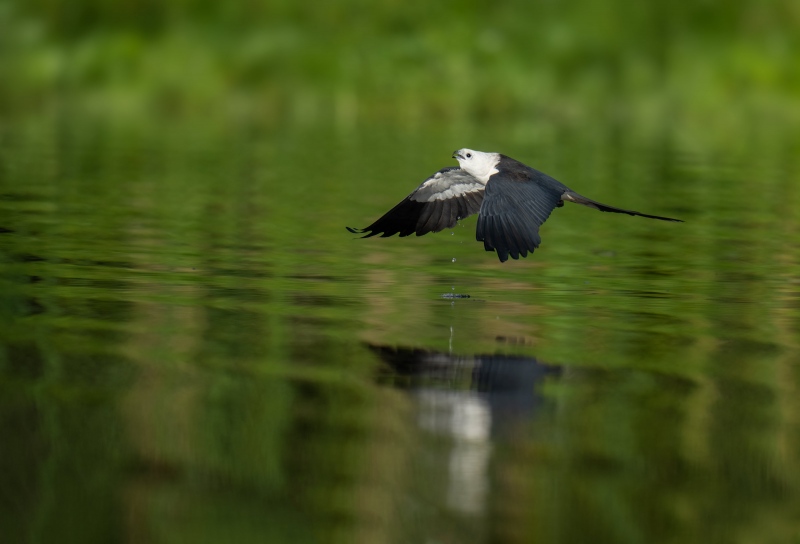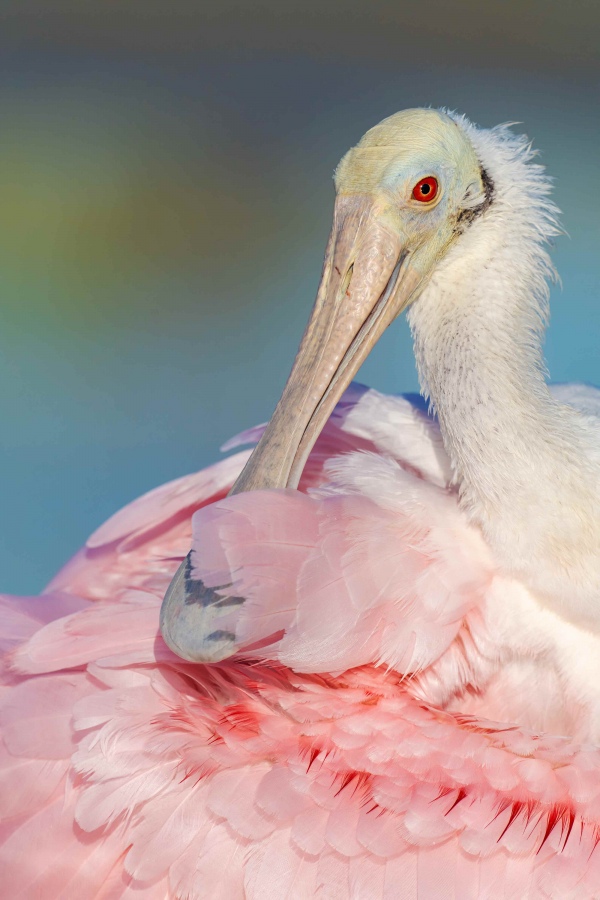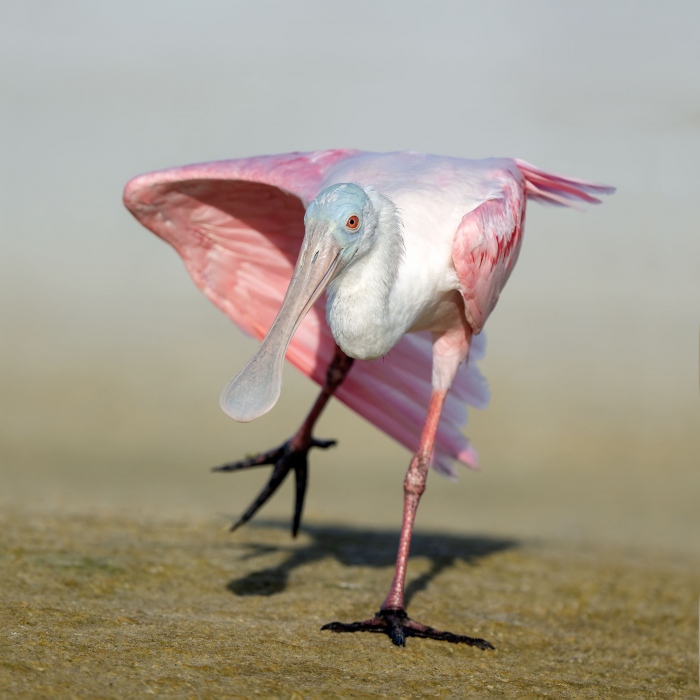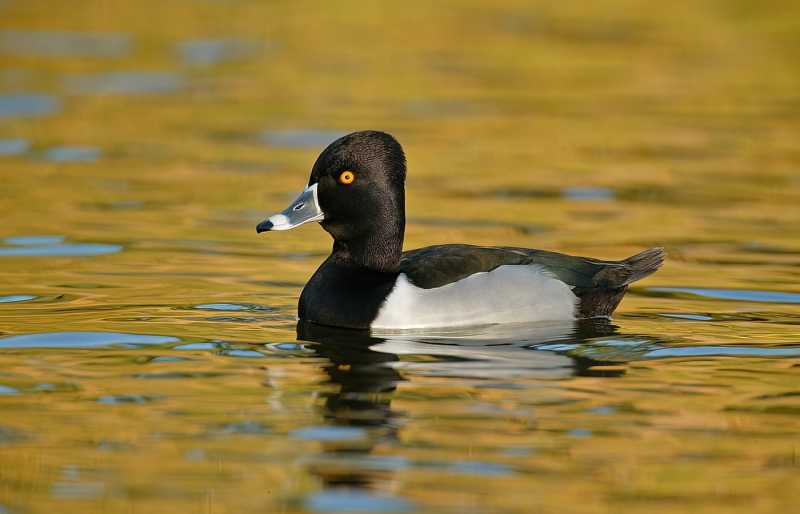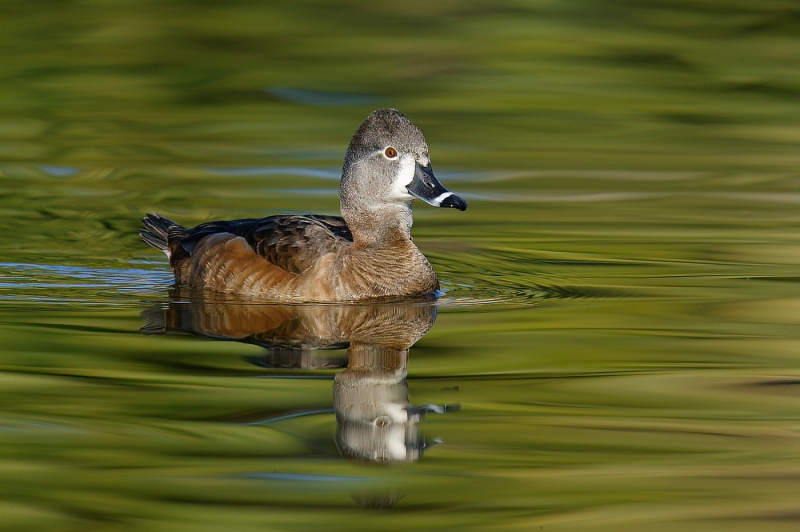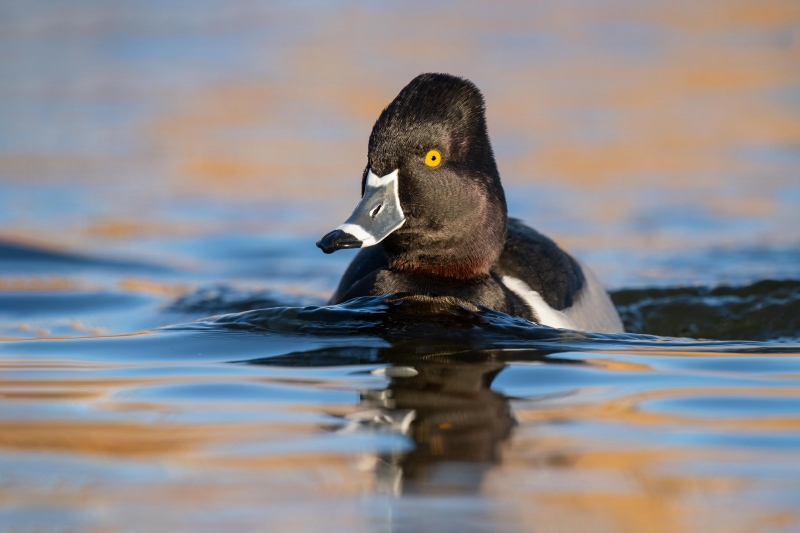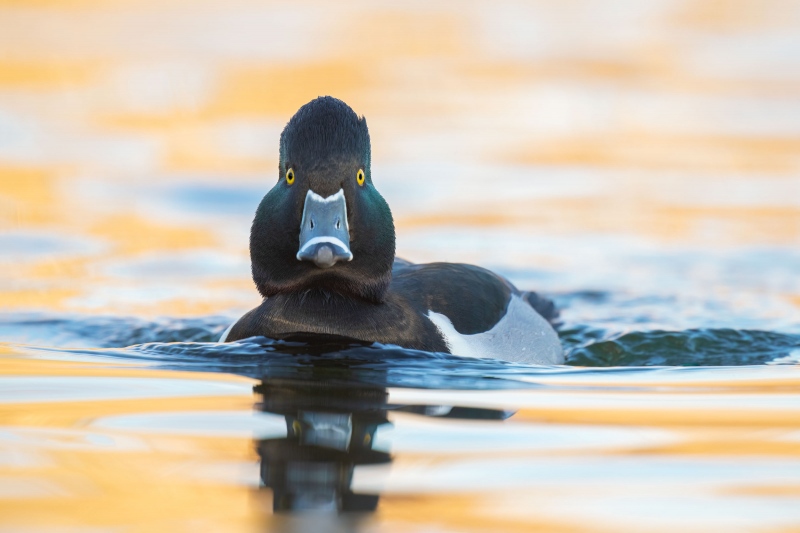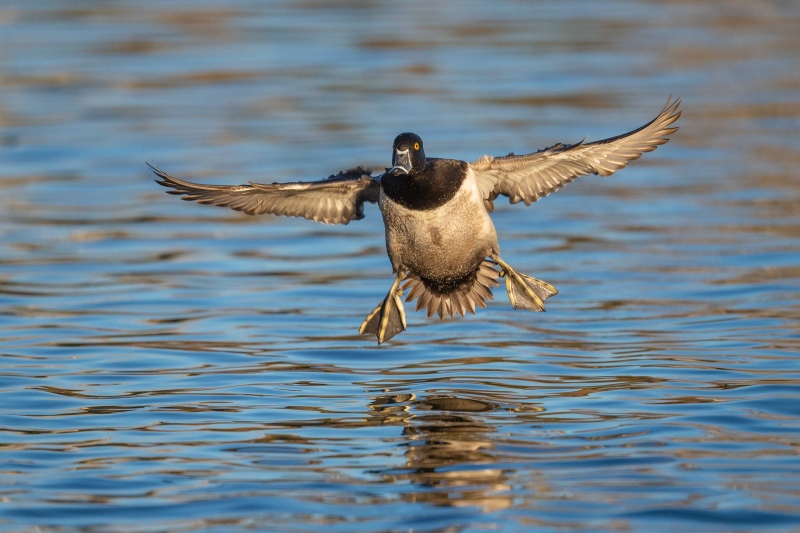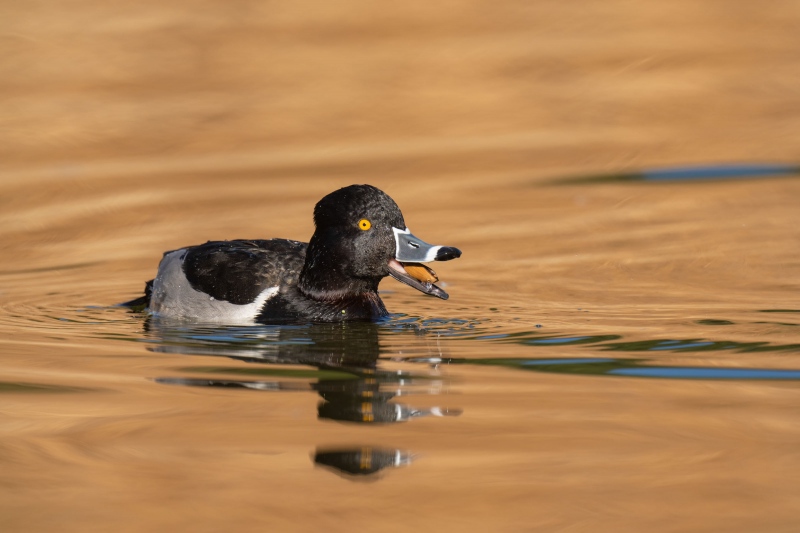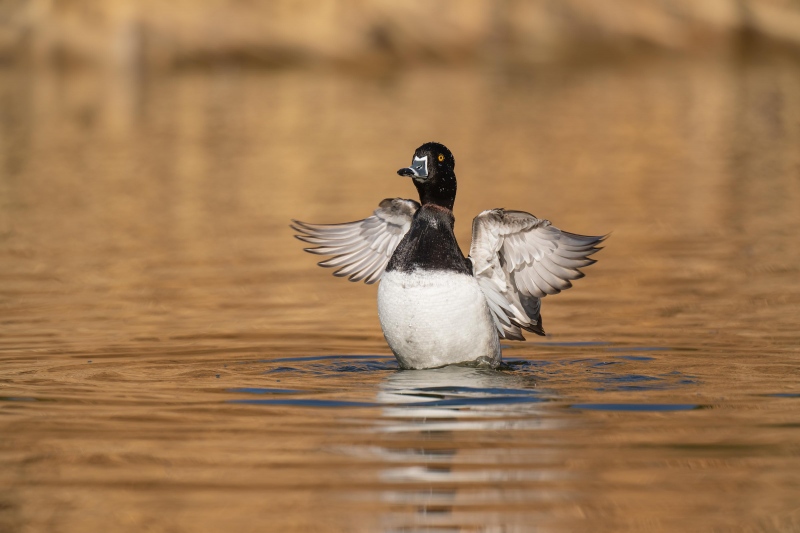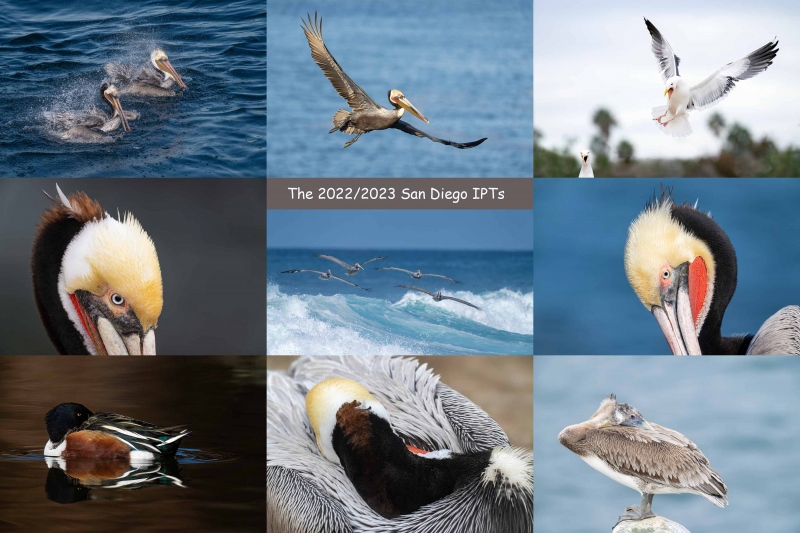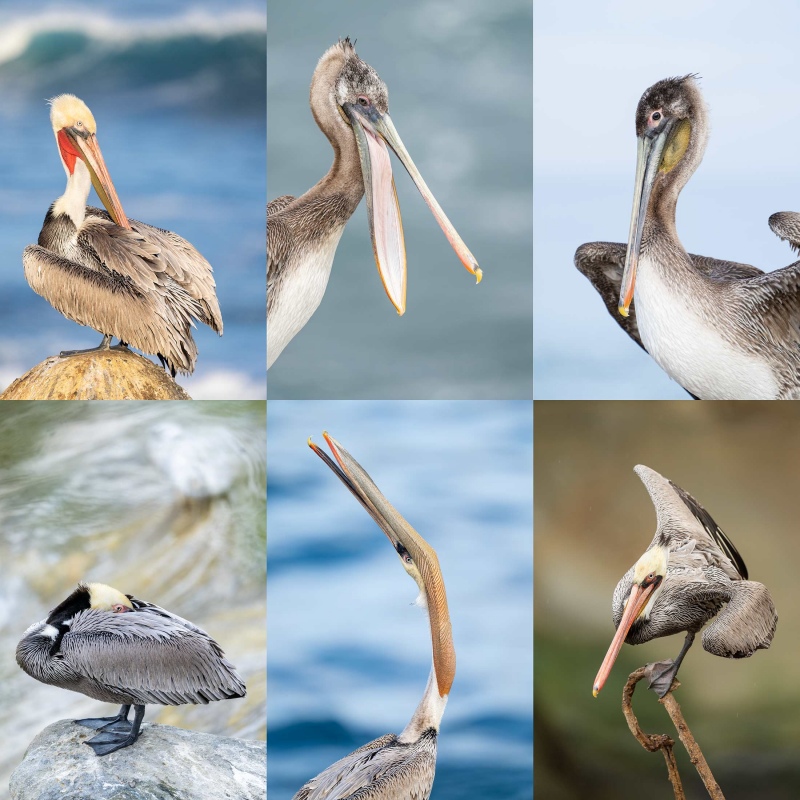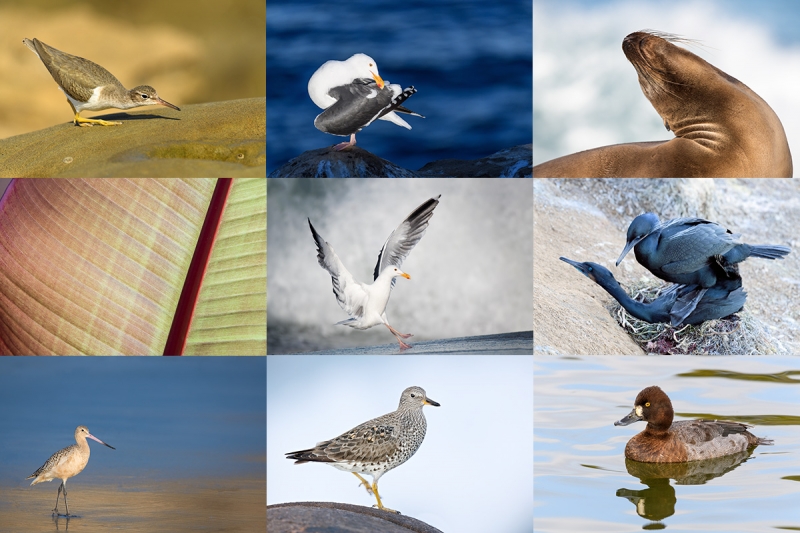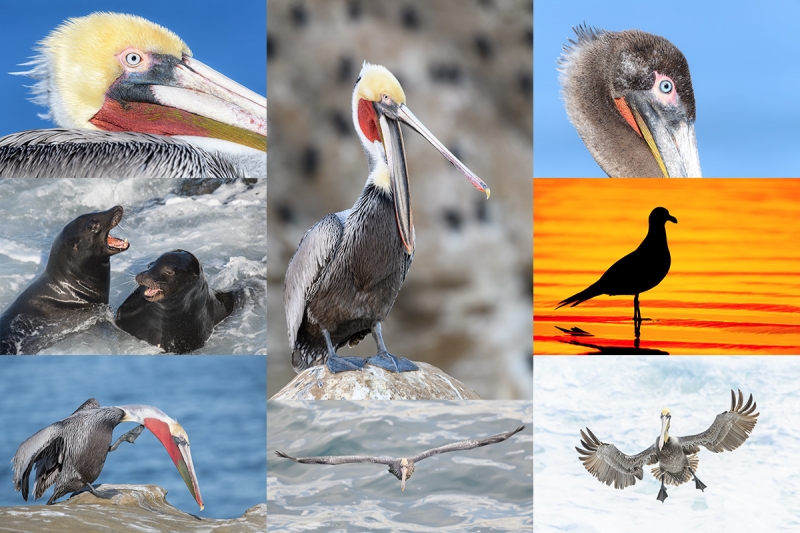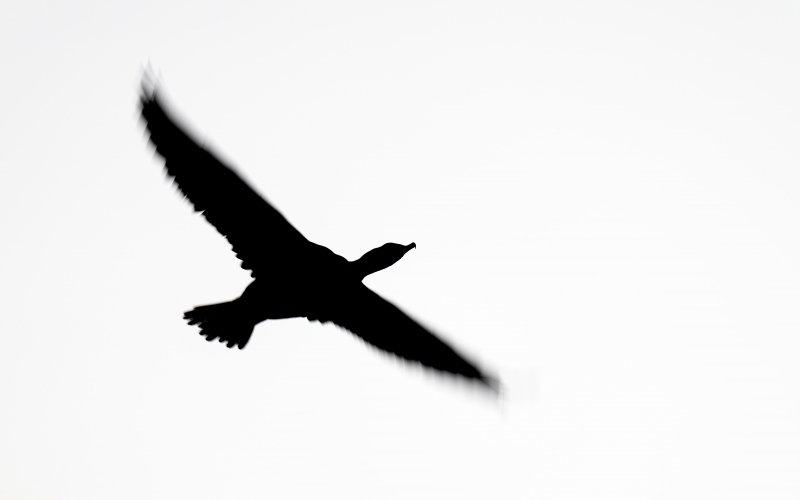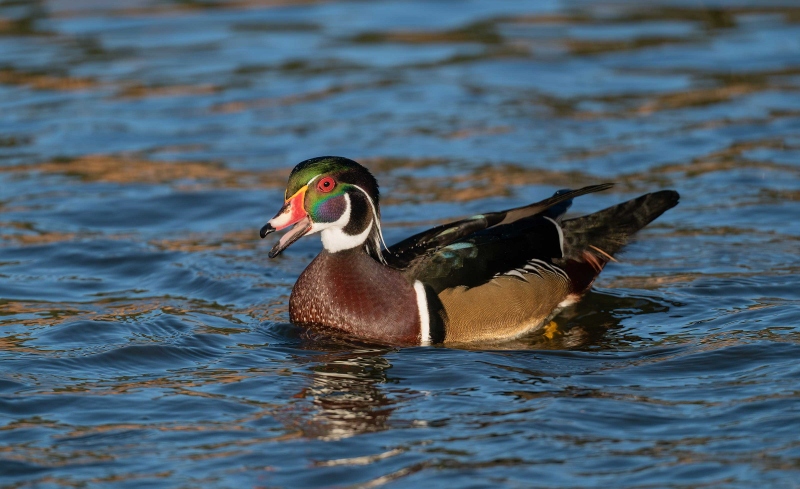July 28th, 2022 Your Call
When I do these catching up blog posts to maximize learning, folks are often reluctant to comment on which of the images is best. Please, therefor, leave a comment letting us know which of the six images below you like best. And why you made your choice. Think of it as a photo contest 🙂 Please note that today’s Image #s are different from the Image #s used in the original posts. Note also that there is one brand new image.
BIRDS AS ART Office Phone Out!
A tree fell on our phone lines while I was in Deland. 863-692-0906 is currently down. If you need to get in touch with Jim or with me, please try my cell at 863-221-2372. If I do not pick up, please shoot us a text.
What’s Up?
I head for the Auto Train this coming Sunday and Long Island on Monday. All my camera batteries are charged, and I will finish packing the photo gear this morning.
With nine deposit checks in hand, and with good friend Ed Dow grabbing a single cabin, there are only three openings left on the 2023 Galapagos Photo-cruise of a Lifetime. The trip is now a go. If you have any interest in joining us, it would be best to get in touch via e-mail ASAP.
I was glad to learn that San Diego IPT veteran and good friend Carolyn Johnson signed up for the first Homer Bald Eagle IPT. She has a big Africa trip coming up in a few weeks. I advised her on Thursday that making a big trip with a single camera body would be a risky endeavor. So, on Friday, she purchased a second Sony A1 from Bedfords. Thanks, CJ! Speaking of Homer, I am looking for someone to do all three Homer Bald Eagle trips and driving the round trip from Anchorage to Homer and back with me. Toward that end, I am offering a ridiculously high discount of $1500 off each trip. That works out to $13,000 for all three trips, a hefty $4500.00 discount. This offer may not last long because there are only two slots left on the second IPT. If you are interested, or would like additional details, please contact me via e-mail
For the first time in weeks, it did not rain here on Wednesday. Today is Thursday 28 July 2022 and I still have lots to do. Wherever you are and whatever you are doing, I hope that you too have a great day. This blog post took about 90 minutes to prepare and makes one hundred twenty-six days in a row with a new one.
Please remember to use the B&H and Amazon links that are found on most blog pages and to use the BIRDSASART discount code at checkout when purchasing your new gear from Bedfords to get 3% back on your credit card and enjoy free second-day air FedEx. Please, also, consider joining a BAA IPT. You will be amazed at how much you will learn!
The First DeSoto IPT
If you are interested in the first DeSoto IPT, 3 1/2 Days, Tuesday 27 September through the morning session on Friday 30 September 2022, know that I just reserved a three-bedroom AirBnB in Gulfport. Share it for four nights with many multiple IPT veteran Monte Brown and me and save a ton on lodging: $83.69/night/person for a whole home. AirBnB photos available upon request. If interested, shoot me an e-mail.
Instagram
Follow me on Instagram here. I am trying to feature both new and old images, especially images that have not appeared recently on the blog. Or search for birds_as_art.
BIRDS AS ART Image Optimization Service (BAA IOS)
Send a PayPal for $62.00 to birdsasart@verizon.net or call Jim at 863-692-0906 and put $62.00 on your credit card. Pick one of your best images and upload the raw file using a large file sending service like Hightail or DropBox and then send me the link via e-mail. I will download and save your raw file, evaluate the exposure and sharpness, and optimize the image as if it were my own after converting the raw file in Adobe Camera Raw. Best of all, I will make a screen recording of the entire process and send you a link to the video to download, save and study.
Induro GIT 304L Price Drop
Amazingly, we have two, brand-new-in-the-box Induro GIT 304L tripods in stock. They are $699.00 each (were $799.00) and the price now includes the insured ground shipping to the lower 48 states. Weekday phone orders only: 863-692-0906. Order yours here while they last.
Please Remember
You can find some great photo accessories (and necessities, like surf booties!) on Amazon by clicking on the Stuff tab on the orange/yellow menu bar above. On a related note, it would be extremely helpful if blog-folks who, like me, spend too much money on Amazon, would get in the habit of clicking on the Amazon logo link on the right side of each blog post when they shop online. As you might expect, doing so will not cost you a single penny, but would be appreciated tremendously by yours truly. And doing so works seamlessly with your Amazon Prime account.
Please remember that if an item — a Delkin flash card, or a tripod head — for example, that is available from B&H and/or Bedfords, is also available in the BAA Online Store, it would be great, and greatly appreciated, if you would opt to purchase from us. We will match any price. Please remember also to use my B&H affiliate links or to earn 3% cash back at Bedfords by using the BIRDSASART discount code at checkout for your major gear purchases. Doing either often earns you free guides and/or discounts. And always earns my great appreciation.
Brand-New and As-Good-As-Ever Bedfords BAA Discount Policy
Folks who have fallen in love with Bedfords can now use the BIRDSASART coupon code at checkout to enjoy a post-purchase, 3% off-statement credit (excluding taxes and shipping charges) on orders paid with a credit card. The 3% credit will be refunded to the card you used for your purchase. Be sure, also, to check the box for free shipping to enjoy free Second Day Air Fed-Ex. This offer does not apply to purchases of Classes, Gift Cards, or to any prior purchases.
Money Saving Reminder
Many have learned that if you need a hot photo item that is out of stock at B&H and would like to enjoy getting 3% back on your credit card along with free 2nd Day Air Fed-Ex Air shipping, your best bet is to click here, place an order with Bedfords, and enter the coupon code BIRDSASART at checkout. If an item is out of stock, contact Steve Elkins via e-mail or on his cell phone at (479) 381-2592 (Central time). Be sure to mention the BIRDSASART coupon code and check the box for Free Shipping. That will automatically upgrade to free 2nd Day Air Fed-Ex. Steve has been great at getting folks the hot items that are out of stock at B&H and everywhere else. The waitlists at the big stores can be a year or longer for the hard-to-get items. Steve will surely get you your gear long before that. For the past year, he has been helping BAA Blog folks get their hands on items like the SONY a 1, the SONY 200-600 G OSS lens, the Canon EOS R5, the Canon RF 100-500mm lens, and the Nikon 500mm PF. Steve is personable, helpful, and eager to please.
Important Note
As an Amazon Associate, I earn a small percentage when you purchase from Amazon after using any of the Amazon links on the blog (including the logo-link on the right side of each blog post page). My affiliate link works fine with Amazon Prime and using it will not cost you a single cent. Huge thanks, BTW 🙂
If You Enjoy the Blog …
Please, if you enjoy and learn from the blog, remember to use one of my two affiliate programs when purchasing new gear. Doing so just might make it possible for me to avoid having to try to get a job as a Walmart greeter and will not cost you a single penny more. And if you use Bedfords and remember to enter the BIRDSASART code at checkout, you will (still!) save 3% on every order and enjoy free second-day air shipping. In these crazy times — I lost about fifty thousand dollars in income due to COVID 19 — remembering to use my B&H link or to shop at Bedfords will help me out a ton and be greatly appreciated. Overseas folks who cannot order from the US because of import fees, duties, and taxes, are invited to help out by clicking here to leave a blog thank you gift if they see fit.


Gear Questions and Advice
Too many folks attending BAA IPTs and dozens of photographers whom I see in the field and on BPN, are–out of ignorance–using the wrong gear, especially when it comes to tripods and more especially, tripod heads… Please know that I am always glad to answer your gear questions via e-mail. If you are desperate, you can try me on my cell at 863-221-2372. Please leave a message and shoot me a text if I do not pick up.
|
|
|
This image was also created on 20 January 2022 on a San Diego/Brown Pelicans and more IPT. Again, I used the no-longer available (except from BAA) Induro GIT 304L tripod/Levered-Clamp FlexShooter Pro-mounted Sony FE 600mm f/4 GM OSS lens, the Sony FE 2.0x Teleconverter, and The One, the Sony Alpha 1 Mirrorless Digital Camera). The exposure was determined via Zebra technology with ISO on the thumb dial. ISO 800. 1/1000 sec. at f/8 (wide open) in Manual mode. When evaluated in RawDigger, the raw file brightness was determined to be 1/3-stop too dark. AWB at 4:09:43pm on a sunny afternoon.
Tracking: Spot S/AF-C with Bird-Eye/Face Detection performed perfectly. Click on the image to enjoy the high-res version. Be sure to click on the image to enjoy a high-res version.
Image #1: Ring-necked Duck diving
|
Just Ducky — Thoughts On Working a Subject
Thanks for all the comment on the Just Ducky — Thoughts On Working a Subject blog post here. I was surprised that so many folks like Image #2, the hen floating on green water; five folks picked that one as their outright favorite. I will admit that the background in that one was special. All the images except 5 and 8 got mentions. My favorite was Image #5, above. Multiple IPT vet John Johnson also picked Image #4. We are both from Brooklyn, NY. I love the action and it always feels to get one right after so many attempts.
Folks often ask, “Why isn’t this species called Ring-billed Duck?” I should have noted in yesterday’s post that Images #3, 7, and 8 show the chestnut ring around the drake’s neck that gives ring-neckeds their name.
|
|
|
This image was created on 21 January 2022 on a San Diego/Brown Pelicans and more IPT. I used the no-longer available Induro GIT 304L tripod/Levered-Clamp FlexShooter Pro-mounted Sony FE 600mm f/4 GM OSS lens, the Sony FE 2.0x Teleconverter, and The One, the Sony Alpha 1 Mirrorless Digital Camera). The exposure was determined via Zebra technology with ISO on the thumb dial. ISO 1000. 1/1000 sec. at f/8 (wide open) in Manual mode. When evaluated in RawDigger, the raw file brightness was determined to be one full stop under. AWB at 6:49:05am as the sun broke through some clouds.
Tracking: Spot S/AF-C with Bird-Eye/Face Detection performed perfectly. Click on the image to enjoy the high-res version. Be sure to click on the image to enjoy a high-res version.
Image #2: Wood and Ruddy ducks/fire-in-the-mist
|
Getting Up Early in San Diego and Learning a Ton!
In the Getting Up Early in San Diego and Learning a Ton! blog post here, Image #2 was the obvious choice and was my favorite as well. Fire in the mist is a rare phenomenon and getting a bird in the right spot is a big plus. That said, one reader preferred Image #1 and another liked Image #3 best.
|
|
|
This image was created on 28 February 2020 on an Instructional Photo-Tour (IPT) at Kachemak Bay, Homer, AK. I used the hand held Sony FE 200-600mm f/5.6-6.3 G OSS lens with the Sony FE 1.4x Teleconverter (at 741mm) with the Sony a7R IV (now replaced, for me, by The One, the Sony a1 Mirrorless Camera). ISO 400. Exposure determined via Zebras with ISO on the Thumb Wheel: RawDigger showed that the exposure was perfect: 1/1250 sec. at f/9 (wide open) in Manual mode. AWB at 3:09:51pm on a sunny afternoon.
Flexible Spot S/AF-C with performed perfectly by tracking and nailing the bird’s eye.
Image #3: Bald Eagle head portrait against dark charcoal rocks on the beach
|
Easy Eagle Pickings with Handheld Zoom Lenses
In the Easy Eagle Pickings with Handheld Zoom Lenses blog post here, there were folks who picked all three images as best. Though I like the two square crops, my favorite by far was Image #2, above. I had two reasons:
- 1- I love, love, love the charcoal gray beach rocks background and the 3X2 version showed more of it than the square version.
- 2- To get to a square crop, I needed to take a bit off the left side of the frame. That reduced the size and impact of the folded wing in the lower left corner. Though only slightly, I noticed it.
|
|
|
This image was created on 24 July 2022, the second day of our adventure on Clemens Van der Werf’s flats boat on Lake Woodruff near Deland, FL. Again, I used the handheld Sony FE 400mm f/2.8 GM OSS lens with the Sony FE 2.0x Teleconverter, and The One, the Sony Alpha 1 Mirrorless Digital Camera). The exposure was determined using Zebra technology with ISO on the Thumb Wheel: ISO 800 — 1/4000 sec. at f/5.6 (wide open) in Manual mode. When evaluated in RawDigger, the raw file brightness was determined to be perfect. AWB at 8:31:01am on a clear sunny morning.
Tracking: Zone/AF-C with Bird Face/Eye detection enabled performed perfectly. Be sure to click on the image to enjoy a high-res version.
Image #4: Swallow-tailed Kite — sipping and dripping take-off
|
Wings Down? Wings Up?
Both and Neither
In the Wings Down? Wings Up? blog post here, opinions were split pretty much down the middle. Likewise, I had no clear favorite. Wings fully down and wings fully up are my two favorite flight wing positions. The latter is always best when the near-underwing is evenly lit. That said, there are other pleasing sing positions especially when a bird is angling toward us in flight.
Image #4 was created on day 2 of our Lake Woodruff adventure. I like it better than the two previously mentioned images because the face was sharper, and I love the foreground reflections. Image #4 was cropped from the top right, and I added a bit of canvas to the bottom and the left. Content-aware Crop is a great technique. Content-Aware Crop is not specifically mentioned in the BIRDS AS ART Current Workflow e-Guide (Digital Basics II), but there are lots of clues as to how you might do it. If you own DB II and need some help, click here and cut and paste proof of purchase into your e-mail and I will be glad to send you a short tutorial.
One tiny thing bugs me about Image #4. If you think that you know what it is, please leave a comment. The first person to spot it will be eligible for a $100 discount on any BAA IPT.
|
|
|
This image was created on 22 September 2020 on the IPT on a DeSoto IPT. I used the no-longer available (except from BAA) Induro GIT 304L tripod/Levered-Clamp FlexShooter Pro-mounted BLUBB-supported Sony FE 600mm f/4 GM OSS lens, the Sony FE 2.0x Teleconverter, and the Sony a7R IV (now replaced for me by The One, the Sony Alpha 1 Mirrorless Digital Camera). The exposure was determined via Zebra technology with ISO on the thumb dial. ISO 1000. 1/1600 sec. at f/9 (stopped down 1/3-stop) in Manual mode. When evaluated in RawDigger, the raw file exposure was determined to be perfect. AWB at 8:26:16am on a barely sunny morning.
Flexible Spot AF-C. Be sure to click on the image to enjoy a high-res version.
Image #5: Roseate Spoonbill — tight horizontal face portrait
|
A Little-Known Pink Fact
In the A Little-Known Pink Fact blog post here, the two folks who commented liked Image #2, the preening vertical, best. So did I. I loved the perfect preening head angle and position, the super-sharp ruby-red eye, the bill buried in the fluffy pink feathers, and the suffused blues and greens in the background. The potential for learning, however, was greatest in Image #3, now below as today’s Image #6. Nobody answered the questions so I will answer them below.
|
|
|
This image was created on 20 September 2021 on a Fort DeSoto IPT. Seated on damp sand I used the lowered, no-longer available (except from BAA) Induro GIT 304L tripod/Levered-Clamp FlexShooter Pro-mounted Panning Ground Pod-supported Sony FE 600mm f/4 GM OSS lens with the Sony FE 1.4x Teleconverter, and The One, the Sony Alpha 1 Mirrorless Digital Camera.. ISO 1000. The exposure was determined by Zebras with ISO on the rear wheel: 1/3200 second at f/5.6 (wide open) in Manual mode. RawDigger showed that the exposure was perfect. AWB at 8:37:29am on sunny morning with just a bit of haze in front of the sun.
Tracking: Spot S/AF-C with Bird-Eye/Face Detection performed perfectly. Click on the image to enjoy the high-res version.
Image #6: Roseate Spoonbill — stretching
|
Do You Like the Shadow?
Do you like the shadow of the bird on the sand in Image #3? Why or why not?
AM: I liked the shadow as it added depth to the image. I liked that it was angled to our right, and that you can see the shadow of the spoon-shaped bill on the sand.
How might I have eliminated the shadow?
I could have eliminated the shadow by getting about one foot lower.
Via e-mail from Muhammad Arif
I had a great time at Fort DeSoto. Thank you for all the instruction, for your help and pointers; my photography has already improved tremendously, and I’ve never made such good bird photos before. I wish I could’ve joined you on Monday and Tuesday morning as well, but work got in the way. It was also nice meeting the folks on the IPT. Thanks again for everything and I hope to join you at a future IPT sometime again.
|

|
|
Fort DeSoto in fall is rife with tame birds. All the images on this card were created at Fort DeSoto in either late September or very early October. I hope that you can join me there this fall. Click on the composite to enjoy a larger version.
Clockwise from upper left to center: Long-billed Curlew, Marbled Godwit, Caspian Tern, Great Egret, Sandwich Tern with fish, Willet, Black-bellied Plover threat display, Snowy Egret, 2-year old Yellow-Crowned Night-Heron, juvenile Yellow-Crowned Night-Heron.
|
The Fall 2022 Fort DeSoto Instructional Photo-Tours
Fall 2022 Fort DeSoto Instructional Photo-Tour #1
3 1/2 Days: Tuesday 27 September through the morning session on Friday 30 September 2022. $1899.00 includes three working lunches. Limit six photographers/Openings five.
Fall 2022 Fort DeSoto Instructional Photo-Tour #2
3 1/2 Days: 7 October through the morning session on Monday 10 October 2022. $1899.00 includes three working lunches. Limit six photographers.
Fall 2022 Fort DeSoto Instructional Photo-Tour #3
3 1/2 Days: Monday 31 October through the morning session on Thursday 3 November 2022. $1899.00 includes three working lunches. Limit six photographers.
Fort DeSoto, located just south of St. Petersburg, FL, is a mecca for migrant shorebirds and terns in fall. There they join hundreds of egrets, herons, night-herons, and gulls that winter on the T-shaped peninsula. With any luck at all, we should get to photograph one of Florida’s most desirable shorebird species: Marbled Godwit. Black-bellied Plover and Willet are easy, American Oystercatcher is pretty much guaranteed. Great Egret, Snowy Egret, Great Blue Heron, Tricolored Heron, and White Ibis are easy as well and we will almost surely come up with a tame Yellow-crowned Night-Heron or two. And we will get to do some Brown Pelican flight photography. In addition, Royal, Sandwich, Forster’s, and Caspian Terns will likely provide us with some good flight opportunities as well. Though not guaranteed, Roseate Spoonbill and Wood Stork might well be expected. And we will be on the lookout for a migrant passerine fallout in the event of a thunderstorm or two.
On this IPT, all will learn the basics and fine points of digital exposure. Nikon and Canon folks will learn to get the right exposure every time after making a single test exposure, and SONY folks will learn to use Zebras so that they can be sure of making excellent exposures before pressing the shutter button. Everyone will learn how to approach free and wild birds without disturbing them, to understand and predict bird behavior, to identify many species of shorebirds, to spot the good situations, to choose the best perspective, to see and understand the light, and to design pleasing images by mastering your camera’s AF system. Most importantly, you will surely learn to evaluate wind and sky conditions and understand how they affect bird photography. And you will learn how and why to work in Manual mode (even if you’re scared of it). The best news is that you will be able to take everything you learn home with you so that you will be a better photographer wherever and whenever you photograph.
There will be a Photoshop/image review session during or after lunch (included) each full day. That will be followed by Instructor Nap Time.
These IPTs will run with only a single registrant (though that is not likely to happen). The best airport is Tampa (TPA). Once you register, you will receive an e-mail with Gulfport AirBnB information. If you register soon and would like to share an AirBnB with me, shoot me an e-mail. Other possibilities including taking a cab to and from the airport to our AirBnB and riding with me. This saves you both gas and the cost of a rental car.
A $600 deposit is due when you sign up and is payable by credit card. Balances must be paid by check two months before the trip. Your deposit is non-refundable unless the IPT sells out with six folks, so please check your plans carefully before committing. You can register by calling Jim or Jennifer during weekday business hours at 863-692-0906 with a credit card in hand, or by sending a check as follows: make the check out to: BIRDS AS ART and send it via US mail here: BIRDS AS ART, PO BOX 7245, Indian Lake Estates, FL 33855. You will receive a confirmation e-mail with detailed instructions, clothing, and gear advice. Please shoot me an e-mail if you plan to register or if you have any questions.
|

|
|
Clockwise from upper left to center: Long-billed Curlew, juvenile Tricolored Heron, Marbled Godwits, Great Blue Heron, juvenile Pectoral Sandpiper, Wood Stork, smiling Sea Scallop, Ruddy Turnstone scavenging needlefish, Great Blue Heron sunset silhouette at my secret spot, and southbound migrant tern flock blur.
|
Up Early, Stay Out Late!
Obviously, folks attending an IPT will be out in the field early and stay late to take advantage of the sweetest light and sunrise and sunset colors (when possible). The good news is that the days are relatively short in early fall. I really love it when I am leaving the beach on a sunny morning after a great session just as a carful or two of well-rested photographers are arriving. The length of cloudy morning sessions will often be extended. Click on the composite to enjoy a larger version.
Typos
With all blog posts, feel free to e-mail or to leave a comment regarding any typos or errors.
July 27th, 2022 Your Call
Which of today’s eight Ring-necked Duck images do you like best? Why did you make your choice? If you can’t get down to one, limit your choices to three and let us know why you selected the ones you did.
BIRDS AS ART Office Phone Out!
A tree fell on our phone lines while I was in Deland. 863-692-0906 is currently down. If you need to get in touch with Jim or with me, please try my cell at 863-221-2372. If I do not pick up, please shoot us a text.
Ordering Used Gear from B&H
To order used gear from B&H using my affiliate link — they have a large selection, please start with this link, and then type Used Department in the search box. Then do a search for you item. Doing so will not cost you one cent extra and helps me out a ton. The prices, however, will be higher than on the BAA Used Gear Page (but they have a lot more stuff).
What’s Up?
I head for the Auto Train this coming Sunday and Long Island on Monday.
With nine deposit checks in hand, and with good friend Ed Dow grabbing a single cabin, there are only three openings left on the 2023 Galapagos Photo-cruise of a Lifetime. The trip is now a go. If you have any interest in joining us, it would be best to get in touch via e-mail ASAP.
I was glad to learn that San Diego IPT veteran and good friend Carolyn Johnson signed up for the first Homer Bald Eagle IPT. She has a big Africa trip coming up in a few weeks. I advised her on Thursday that making a big trip with a single camera body would be a risky endeavor. So, on Friday, she purchased a second Sony A1 from Bedfords. Thanks, CJ! Speaking of Homer, I am looking for someone to do all three Homer Bald Eagle trips and driving the round trip from Anchorage to Homer and back with me. Toward that end, I am offering a ridiculously high discount of $4500.00, $1500 off each trip. The offer may not last long because there are only two slots left on the second IPT. If you are interested, or would like additional details, please contact me via e-mail
It thundered, lightninged, and poured for four hours yesterday afternoon. And then it drizzled. I took a walk, and the tree frog chorus was deafening. Soon I will be able to swim in my office as it is right off the pool deck.
Today is Wednesday 27 July 2022 and I have a ton of stuff to do. Yesterday I charged all my camera batteries :). Heck, it’s a start! Wherever you are and whatever you are doing, I hope that you too have a great day. This blog post took nearly three hours to prepare and makes one hundred twenty-five days in a row with a new one.
Please remember to use the B&H and Amazon links that are found on most blog pages and to use the BIRDSASART discount code at checkout when purchasing your new gear from Bedfords to get 3% back on your credit card and enjoy free second-day air FedEx. Please, also, consider joining a BAA IPT. You will be amazed at how much you will learn!
The First DeSoto IPT
If you are interested in the first DeSoto IPT, 3 1/2 Days, Tuesday 27 September through the morning session on Friday 30 September 2022, know that I just reserved a three-bedroom AirBnB in Gulfport. Share it for four nights with many multiple IPT veteran Monte Brown and me and save a ton on lodging: $83.69/night/person for a whole home. AirBnB photos available upon request. If interested, shoot me an e-mail.
Instagram
Follow me on Instagram here. I am trying to feature both new and old images, especially images that have not appeared recently on the blog. Or search for birds_as_art.
BIRDS AS ART Image Optimization Service (BAA IOS)
Send a PayPal for $62.00 to birdsasart@verizon.net or call Jim at 863-692-0906 and put $62.00 on your credit card. Pick one of your best images and upload the raw file using a large file sending service like Hightail or DropBox and then send me the link via e-mail. I will download and save your raw file, evaluate the exposure and sharpness, and optimize the image as if it were my own after converting the raw file in Adobe Camera Raw. Best of all, I will make a screen recording of the entire process and send you a link to the video to download, save and study.
Induro GIT 304L Price Drop
Amazingly, we have two, brand-new-in-the-box Induro GIT 304L tripods in stock. They are $699.00 each (were $799.00) and the price now includes the insured ground shipping to the lower 48 states. Weekday phone orders only: 863-692-0906. Order yours here while they last.
Please Remember
You can find some great photo accessories (and necessities, like surf booties!) on Amazon by clicking on the Stuff tab on the orange/yellow menu bar above. On a related note, it would be extremely helpful if blog-folks who, like me, spend too much money on Amazon, would get in the habit of clicking on the Amazon logo link on the right side of each blog post when they shop online. As you might expect, doing so will not cost you a single penny, but would be appreciated tremendously by yours truly. And doing so works seamlessly with your Amazon Prime account.
Please remember that if an item — a Delkin flash card, or a tripod head — for example, that is available from B&H and/or Bedfords, is also available in the BAA Online Store, it would be great, and greatly appreciated, if you would opt to purchase from us. We will match any price. Please remember also to use my B&H affiliate links or to earn 3% cash back at Bedfords by using the BIRDSASART discount code at checkout for your major gear purchases. Doing either often earns you free guides and/or discounts. And always earns my great appreciation.
Brand-New and As-Good-As-Ever Bedfords BAA Discount Policy
Folks who have fallen in love with Bedfords can now use the BIRDSASART coupon code at checkout to enjoy a post-purchase, 3% off-statement credit (excluding taxes and shipping charges) on orders paid with a credit card. The 3% credit will be refunded to the card you used for your purchase. Be sure, also, to check the box for free shipping to enjoy free Second Day Air Fed-Ex. This offer does not apply to purchases of Classes, Gift Cards, or to any prior purchases.
Money Saving Reminder
Many have learned that if you need a hot photo item that is out of stock at B&H and would like to enjoy getting 3% back on your credit card along with free 2nd Day Air Fed-Ex Air shipping, your best bet is to click here, place an order with Bedfords, and enter the coupon code BIRDSASART at checkout. If an item is out of stock, contact Steve Elkins via e-mail or on his cell phone at (479) 381-2592 (Central time). Be sure to mention the BIRDSASART coupon code and check the box for Free Shipping. That will automatically upgrade to free 2nd Day Air Fed-Ex. Steve has been great at getting folks the hot items that are out of stock at B&H and everywhere else. The waitlists at the big stores can be a year or longer for the hard-to-get items. Steve will surely get you your gear long before that. For the past year, he has been helping BAA Blog folks get their hands on items like the SONY a 1, the SONY 200-600 G OSS lens, the Canon EOS R5, the Canon RF 100-500mm lens, and the Nikon 500mm PF. Steve is personable, helpful, and eager to please.
Important Note
As an Amazon Associate, I earn a small percentage when you purchase from Amazon after using any of the Amazon links on the blog (including the logo-link on the right side of each blog post page). My affiliate link works fine with Amazon Prime and using it will not cost you a single cent. Huge thanks, BTW 🙂
If You Enjoy the Blog …
Please, if you enjoy and learn from the blog, remember to use one of my two affiliate programs when purchasing new gear. Doing so just might make it possible for me to avoid having to try to get a job as a Walmart greeter and will not cost you a single penny more. And if you use Bedfords and remember to enter the BIRDSASART code at checkout, you will (still!) save 3% on every order and enjoy free second-day air shipping. In these crazy times — I lost about fifty thousand dollars in income due to COVID 19 — remembering to use my B&H link or to shop at Bedfords will help me out a ton and be greatly appreciated. Overseas folks who cannot order from the US because of import fees, duties, and taxes, are invited to help out by clicking here to leave a blog thank you gift if they see fit.


Gear Questions and Advice
Too many folks attending BAA IPTs and dozens of photographers whom I see in the field and on BPN, are–out of ignorance–using the wrong gear, especially when it comes to tripods and more especially, tripod heads… Please know that I am always glad to answer your gear questions via e-mail. If you are desperate, you can try me on my cell at 863-221-2372. Please leave a message and shoot me a text if I do not pick up.
|
|
|
This image was created on 13 January 2004 on a San Diego/Brown Pelicans and more IPT. I used the tripod/Mongoose Action Head mounted Canon 500mm f/4L IS lens (the “old” five) with a 2C teleconverter and the (then high mega-pixel) Canon EOS-1DS. ISO 250! 1/200 second at f/8 (wide open) in Manual Mode. AWB at 8:19:25am on sunny morning.
Click on the image to see a larger version and the somewhat suspect image quality.
Image #1: Ring-necked Duck drake floating
|
On Working a Subject
Take a quick look at today’s eight featured images. Note that they were created over the course of 14 years with all sorts of gear. Seven depict the showy drakes, one the hen. Each image is different. Some were made in the sun, some in the shade. Several depict interesting behaviors.
Me on an IPT: Wow! Check out that Great Blue Heron in the gorgeous water. It just caught a big fish. Hurry, but don’t go so fast as to scare it away. We do not have to get too close.
Joe, why didn’t you join us? We all got some neat stuff.
Participant Joe: I’ve already photographed Great Blue Heron.
Folks, the idea is not just to make a single photograph a given species. The idea is to learn to create dramatic, beautiful, interesting, artistically perfect, well-designed images that excite you and others. Over time it is possible to create a nice portfolio of a single species. Note, also, that although these eight images were created 14 years apart, two of them were created in less than two minutes, three were created on the same day, and five were made in just two days.
The Lesson
By staying with the same subject for more than a few minutes, by working the subject, you can make a variety of great images.
|
|
|
This image was created on 12 January 2004 on a San Diego/Brown Pelicans and more IPT. I used the tripod/Mongoose Action Head mounted Canon 500mm f/4L IS lens (the “old” five) with a 2C teleconverter and the (then high mega-pixel) Canon EOS-1DS. ISO 250! 1/640 second at f/9 (stopped down 1/3-stop) in Manual Mode. AWB at 9:07:22am on sunny morning.
Click on the image to note the somewhat shaky image quality.
Image #2: Ring-necked Duck hen floating
|
The Canon EOS 1Ds
The EOS-1Ds is/was a full-frame 11.1-megapixel digital SLR camera body made by Canon in 2002. It was Canon’s first full-frame dSLR. It was far ahead of other cameras all with far smaller files. The price was $7,999 in 2002 (equivalent to $12,051 in 2021 dollars). You could shoot at 3 frames per second for a 10-frame burst. I purchased a new one for $7000 in 2003 and was lucky to get $2000 for it two years later.
Comparing this camera and its capabilities with today’s amazing dSLRs and mirrorless bodies reveals how far we have come and how lucky we are. For example, take the Sony A1 with its 50.1-MP sensor, 30 frames per second, and science-fiction-like autofocus. I forgot to mention the 1DS had one AF point in the center of the frame. The a1 offers 14 AF methods.
Note: the image quality for the two 1Ds JPEGs would have been a lot better had I grabbed the optimized TIF files; all I had to work with was the slide show-sized 1400 pixel-wide JPEGs.
|
|
|
This image was created on 20 January 2022 on a San Diego/Brown Pelicans and more IPT. I used the no-longer available (except from BAA) Induro GIT 304L tripod/Levered-Clamp FlexShooter Pro-mounted Sony FE 600mm f/4 GM OSS lens, the Sony FE 2.0x Teleconverter, and The One, the Sony Alpha 1 Mirrorless Digital Camera). The exposure was determined via Zebra technology with ISO on the thumb dial. ISO 1000. 1/640 sec. at f/8 (wide open) in Manual mode. When evaluated in RawDigger, the raw file brightness was determined to be perfect. AWB at 4:07:05pm on a sunny afternoon.
Tracking: Zone/AF-C with Bird-Eye/Face Detection performed perfectly. Click on the image to enjoy the high-res version. Be sure to click on the image to enjoy a high-res version.
Image #3: Ring-necked Duck steaming straight at us in the sun
|
Getting Lower
Working off the tilted rear monitor (with my reading glasses on) and the flattened tripod allowed me to get fairly low despite the steep bank down to the lake. Once I have the tripod set up firmly, I level the Levered-Clamp FlexShooter Pro so that I can pan in any direction and keep all the image perfectly square to the world.
|
|
|
This image was also created on 20 January 2022 on a San Diego/Brown Pelicans and more IPT. I used the no-longer available (except from BAA) Induro GIT 304L tripod/Levered-Clamp FlexShooter Pro-mounted Sony FE 600mm f/4 GM OSS lens, the Sony FE 2.0x Teleconverter, and The One, the Sony Alpha 1 Mirrorless Digital Camera). The exposure was determined via Zebra technology with ISO on the thumb dial. ISO 2000. 1/320 sec. at f/8 (wide open) in Manual mode. When evaluated in RawDigger, the raw file brightness was determined to be perfect. AWB at 4:40:24pm in the shade of a distant hill on a sunny afternoon.
Tracking: Zone/AF-C with Bird-Eye/Face Detection performed perfectly. Click on the image to enjoy the high-res version. Be sure to click on the image to enjoy a high-res version.
Image #4: Ring-necked Duck swimming at us in now soft light
|
Seeing and Understanding the Quality of the Light
Compare Image #3, made in full sun, with Image #4, made in the shade. Note the differences in the color of the water and especially how the dark tones of the duck’s head were rendered in the two different lighting conditions.
Exposure Revelations
Note the huge differences in the two correct exposures. Image #3: ISO 1000. 1/640 sec. at f/8. Image #4: ISO 2000. 1/320 sec. at f/8. If I am doing the math correctly, Image #4 required twice as much light to be properly exposed than did Image #3. Sony Zebras make your life a lot easier as there is no longer a need to make test exposures. Just set your shutter speed and aperture and then adjust the ISO so that you have faint Zebras on the brightest highlights.
|
|
|
This image was also created on 20 January 2022 on a San Diego/Brown Pelicans and more IPT. Again, I used the no-longer available (except from BAA) Induro GIT 304L tripod/Levered-Clamp FlexShooter Pro-mounted Sony FE 600mm f/4 GM OSS lens, the Sony FE 2.0x Teleconverter, and The One, the Sony Alpha 1 Mirrorless Digital Camera). The exposure was determined via Zebra technology with ISO on the thumb dial. ISO 800. 1/1000 sec. at f/8 (wide open) in Manual mode. When evaluated in RawDigger, the raw file brightness was determined to be 1/3-stop too dark. AWB at 4:09:43pm on a sunny afternoon.
Tracking: Spot S/AF-C with Bird-Eye/Face Detection performed perfectly. Click on the image to enjoy the high-res version. Be sure to click on the image to enjoy a high-res version.
Image #5: Ring-necked Duck diving
|
The Diving Splash Shot!
I have tried thousands of these over the decades. The main subjects have been ring-necked and ruddy ducks and Buffleheads. Few have been successful. This is one of my favorites. Timing the shutter release so that you get the bird’s head just after it disappears is key. 30 fps helps a lot. High shutter speeds are the rule here especially if you want to get a sharp one of the head before it hits the surface. The next time I get the chance to do the diving splash shot I will be at 1/4000 second at least. Heck, maybe 1/8000 sec.
The 500 PF
The Nikon 500mm PF was and still is a great, easily hand-holdable lens. I used and loved it for two years. It was my workhorse long lens on one Galapagos trip and on my Emperor Penguin bucket list expedition back in 2019.
Nikon AF-S NIKKOR 500mm f/5.6E PF ED VR Lens (with an extra)
BAA Record-low Price!
John Armitage is offering a Nikon AF-S NIKKOR 500mm f/5.6E PF ED VR lens in excellent condition for a for a BAA Record Low $2496.95. The sale includes the original lens foot, a RRS stuff foot, the front and rear caps, the lens strap, the soft case, the original box, and insured ground shipping via major courier to lower-48 US addresses only. Your item will not ship until your check clears unless other arrangements are made.
Please contact John via e-mail.
Yes, I loved this even now hard-to-get lens a ton when I used Nikon gear. It sells new for $3,296.95. You can save a handsome $800.00 by grabbing John’s lens today. artie
|
|
|
This image was created on 22 January 2022 on a San Diego/Brown Pelicans and more IPT. I used the no-longer available (except from BAA) Induro GIT 304L tripod/Levered-Clamp FlexShooter Pro-mounted Sony FE 600mm f/4 GM OSS lens, the Sony FE 2.0x Teleconverter, and The One, the Sony Alpha 1 Mirrorless Digital Camera). The exposure was determined via Zebra technology with ISO on the thumb dial. ISO 640. 1/1250 sec. at f/8 (wide open) in Manual mode. When evaluated in RawDigger, the raw file exposure was determined to be perfect. AWB at 9:29.43am on a sunny morning.
Tracking: Zone/AF-C with Bird-Eye/Face Detection performed perfectly. Click on the image to enjoy the high-res version. Be sure to click on the image to enjoy a high-res version.
Image #7: Ring-necked Duck swallowing acorn
|
High Level Tricks
On most IPTS you will learn some sophisticated, high level bird photography tricks. Join me in San Diego to learn the acorns for ducks trick.
|
|
|
This image was also created on 22 January 2022 on a San Diego/Brown Pelicans and more IPT. Again, I used the no-longer available (except from BAA) Induro GIT 304L tripod/Levered-Clamp FlexShooter Pro-mounted Sony FE 600mm f/4 GM OSS lens, the Sony FE 2.0x Teleconverter, and The One, the Sony Alpha 1 Mirrorless Digital Camera). The exposure was determined via Zebra technology with ISO on the thumb dial. ISO 800. 1/2000 sec. at f/8 (wide open) in Manual mode. When evaluated in RawDigger, the raw file exposure was determined to be perfect. AWB at 9:31:04am on a sunny morning.
Tracking: Zone/AF-C with Bird-Eye/Face Detection performed perfectly. Click on the image to enjoy the high-res version. Be sure to click on the image to enjoy a high-res version.
Image #8: Ring-necked Duck flapping
|
Flapping After Bath
We’ve covered the basics of the flapping after bath image here many times. Many folks don’t know how to tell which duck will flap when. Again, join me to learn this trick and many more.
|
|
|
This all-new card includes images created on my JAN 2022 visit to San Diego. Click on the composite to enjoy a larger version.
|
The 2022/23 San Diego Brown Pelicans (and more!) IPTs
San Diego IPT #1. 3 1/2 DAYS: WED 21 DEC thru the morning session on Saturday 24 DEC 2022. $2099.00. Deposit: $699.00. Limit: 6 photographers.
San Diego IPT #2. 4 1/2 DAYS: SAT 7 JAN thru the morning session on WED 11 JAN 2023: $2699.00. Deposit: $699.00. Limit: 6 photographers/Openings: 4.
San Diego IPT #3: 3 1/2 DAYS: FRI 20 JAN thru the morning session on MON 23 JAN 2023: $2099.00. Deposit: $699.00.
Please e-mail for information on personalized pre- and post-IPT sessions.
Join me in San Diego to photograph the spectacular breeding plumage Brown Pelicans with their fire-engine red and olive green bill pouches; Brandt’s (nesting) and Double-crested Cormorants; breeding plumage Wood and Ring-necked Ducks; other duck species possible including Lesser Scaup, Redhead, Northern Shoveler and Surf Scoter; a variety of gulls including Western, California, and the gorgeous Heermann’s, all in full breeding plumage; shorebirds including Marbled Godwit, Willet, Sanderling and Black-bellied Plover; many others are possible including Least, Western, and Spotted Sandpiper, Whimbrel, Black and Ruddy Turnstone, Semipalmated Plover, and Surfbird; Harbor Seals and California Sea Lions (both depending on the current regulations and restrictions). And as you can see by studying the IPT cards, there are some nice bird-scape and landscape opportunities as well. Not to mention a ton of excellent flight photography opportunities and instruction.
Please note: where permitted and on occasion, ducks and gulls may be attracted (or re-located) with offerings of grains or healthy bread.
|
|
|
San Diego offers a wealth of very attractive natural history subjects, including and especially the Pacific race of California Brown Pelican. With annual visits spanning more than four decades, I have lots of photographic experience there … Click on the composite to enjoy a larger version.
|
Learning Exposure, Whether You Like It Or Not
Whether you like it or not, we will be beating the subject of exposure like a dead horse. In every new situation, you will hear my thoughts on exposure along with my thoughts on both Nikon and Canon histograms and SONY Zebras. Whether you like it or not, you will learn to work in manual mode so that you can get the right exposure every time (as long as a bird gives you ten seconds with the light constant). Or two seconds with SONY zebras … And you will learn what to do when the light is changing constantly. What you learn about exposure will be one of the great takeaways on every IPT.
|
|
|
Though the pelicans will be the stars of the show on this IPT, there will be many other handsome and captivating subjects in wonderful settings. Click on the composite to enjoy a larger version.
|
It Ain’t Just Pelicans
With gorgeous subjects just sitting there waiting to have their pictures taken, photographing the pelicans on the cliffs is about as easy as nature photography gets. With the winds from the east almost every morning there is usually some excellent flight photography as well, often with 70-200mm lenses! And the pelicans are almost always doing something interesting: preening, scratching, bill pouch cleaning, or squabbling. And then there are those crazy head throws that are thought to be a form of intra-flock communication. You will be guided as to how to make the best of those opportunities. Depending on the weather, the local conditions, and the tides, there are a variety of other fabulous photo chances available in and around San Diego.
|

|
|
Did I mention that there are lots of great birds and natural history subjects in San Diego in winter? Click on the composite to enjoy a larger version.
|
The San Diego Details
These IPTs will include four or five 3-hour morning photo sessions, three or four 1 1/2-hour afternoon photo sessions, and three or four working brunches that will include image review and Photoshop sessions. On rare cloudy days, we may — at the leader’s discretion, stay out in the morning for a long session and skip that afternoon. To ensure early starts, breakfasts will be your responsibility. And so that we can get some sleep, dinners will be on your own as well. In the extremely unlikely event that Goldfish Point is closed due to local ordinance (or whimsy) — that has never happened in the past fifty years, I will of course do my very best to maximize our photographic opportunities.
|
|
|
San Diego offers a wealth of very attractive natural history subjects, including and especially the Pacific race of California Brown Pelican. With annual visits spanning more than four decades, I have lots of photographic experience there … Click on the composite to enjoy a larger version.
|
Deposit Info
A $599 deposit is required to hold your slot for one of the 2022/23 San Diego IPTs. You can send a check (made out to “BIRDS AS ART”) to us here: BIRDS AS ART, PO Box 7245, Indian Lake Estates, FL, 3385, or call Jim or Jennifer at the office with a credit card at 863-692-0906. Your balance, payable only by check, is due three months before the trip.
|

|
|
Variety is surely the spice of life in San Diego. Click on the composite to enjoy a larger version.
|
Getting Up Early and Staying Out Late
On all BIRDS AS ART IPTS including and especially the San Diego IPT, we get into the field early to take advantage of unique and often spectacular lighting conditions and we stay out late to maximize the chances of killer light and glorious sunset silhouette situations. We often arrive at the cliffs a full hour before anyone else shows up to check out the landscape and seascape opportunities. On cloudy mornings with the right wind, we many opt to stay out for five to six hours and skip the afternoon session.
Typos
With all blog posts, feel free to e-mail or to leave a comment regarding any typos or errors.
July 26th, 2022 Your Call
Which of today’s three early morning San Diego images do you like best? Why did you make your choice?
BIRDS AS ART Office Phone Out!
A tree fell on our phone lines while I was away. 863-692-0906 is currently down. If you need to get in touch with Jim or with me, please try my cell at 863-221-2372. If I do not pick up, please shoot us a text.
Ordering Used Gear from B&H
To order used gear from B&H using my affiliate link — they have a large selection, please start with this link, and then type Used Department in the search box. Then do a search for you item. Doing so will not cost you one cent extra and helps me out a ton. The prices, however, will be higher than on the BAA Used Gear Page (but they have a lot more stuff).
What’s Up?
I head for the Auto Train this coming Sunday and Long Island on Monday.
Today is Tuesday 26 July 2022 and I have lots to do. Wherever you are and whatever you are doing, I hope that you too have a great day. This blog post took about 90 minutes to prepare and makes one hundred twenty-four days in a row with a new one.
Please remember to use the B&H and Amazon links that are found on most blog pages and to use the BIRDSASART discount code at checkout when purchasing your new gear from Bedfords to get 3% back on your credit card and enjoy free second-day air FedEx. Please, also, consider joining a BAA IPT. You will be amazed at how much you will learn!
Via e-mail from multiple IPT participant David Hollander
Primarily, what distinguished the San Diego IPT other photographic classes that I have attended was the specificity of the information you shared. By that I mean the level of specific, technical information that was covered. This was helped by the fact that you often gave an explanation as to why you made your choices. For example, when we first arrived at the location, you told people to shoot at 1600, F 5.6, and various shutter speeds. As the light got better, you progressively moved to lower ISOs, and gave us rules of thumb on what ISO to use in different lighting conditions.
You further explained in one of the review sessions that with modern cameras and good software, the noise isn’t really a problem and that you could get rid of the noise from a 1600 ISO a lot easier than fixing a blurred image. Similarly, you gave precise instruction on what aperture to use in various circumstances. In general, before your class, my “default” mode was to shoot in aperture priority, usually at about F 9 or 8.1. The reason wasn’t that I was trying to capture background, but instead to increase my chances of getting the bird’s head in focus if I got the focus point in the wrong place. I will revisit that approach now.
During and image review session, you showed a picture that had the bird’s eye in focus, but the tip of the beak was slightly off. When I asked you whether you would have used a higher F stop in that case, you went to a website showing the impact on the depth of field at the given distance of moving up a stop, which was less than an inch. That demonstrated why increasing the F stop would not have worked in that case. From a teaching perspective, hearing the same information in multiple channels makes it more likely for people to absorb it and remember it, so the technical explanations help the main message sink in. The instruction on use of the back button focus was also very helpful. I had read about that on your blog before, but I had not taken the time to actually try it, and now I have a new tool in my kit. Overall, I found the advice and instruction to be “actionable”. It was all there for those who were listening.
The comparison of slightly different images of the same bird was also very helpful. It showed what you were looking for head angles and placements. However, I should note that differences in many of the pictures that were acute to you were pretty subtle to me, and all of the pictures were ones that most photographers would have been proud to have taken, even the ones that you were rejecting.
|
|
|
This image was created on 21 January 2022 on a San Diego/Brown Pelicans and more IPT. I used the no-longer available (except from BAA) Induro GIT 304L tripod/Levered-Clamp FlexShooter Pro-mounted Sony FE 600mm f/4 GM OSS lens with the Sony FE 1.4x Teleconverter, and The One, the Sony Alpha 1 Mirrorless Digital Camera.. AUTO ISO set ISO 640. The exposure was determined by Zebras with Exposure Compensation on the thumb dial: 1/60 second at f/5.6 (wide open) in Shutter Priority mode +2 stops. RawDigger showed that the exposure was 1/3 stop too dark. AWB at 9:36:21am on clear morning well before sunrise.
Tracking: Zone/AF-C with Bird-Eye/Face Detection performed perfectly. Click on the image to enjoy the high-res version.
Image #1: Double-crested Cormorant pre-dawn sharp on the face blur
|
Getting Up Early
The description of most IPTs included something like this:
Folks attending an IPT will be out in the field early and stay late to take advantage of the sweetest light and sunrise and sunset colors (when possible). The good news is that the days are relatively short in San Diego in winter. I really love it when I am leaving a location on a sunny morning after a great session as a carful of well-rested photographers are arriving after having missed the best photography of the day. The length of cloudy morning sessions will often be extended. On cloudy mornings with the right wind, we many opt to stay out for five to six hours and skip the afternoon session.
Sharp-on-the-Face Flight at Relatively Slow Shutter Speeds
Recently, I have been creating lots of pre-dawn blues at shutter speeds from 1/60 to 1/250 second in hopes of getting a lot more sharp faces and eye than I do when working at shutter speeds of from 1/8 to 1/30 second. With Image #2, that strategy worked perfectly. With all flight photography, you want to strive to match the speed of the bird in flight with your panning speed. The better you are able to do that, the sharper your flight images will be. And yes, practice makes for better results.
|
|
|
This image was created on 21 January 2022 on a San Diego/Brown Pelicans and more IPT. I used the no-longer available Induro GIT 304L tripod/Levered-Clamp FlexShooter Pro-mounted Sony FE 600mm f/4 GM OSS lens, the Sony FE 2.0x Teleconverter, and The One, the Sony Alpha 1 Mirrorless Digital Camera). The exposure was determined via Zebra technology with ISO on the thumb dial. ISO 1000. 1/1000 sec. at f/8 (wide open) in Manual mode. When evaluated in RawDigger, the raw file brightness was determined to be one full stop under. AWB at 6:49:05am as the sun broke through some clouds.
Tracking: Spot S/AF-C with Bird-Eye/Face Detection performed perfectly. Click on the image to enjoy the high-res version. Be sure to click on the image to enjoy a high-res version.
Image #2: Wood and Ruddy ducks/fire-in-the-mist
|
Fire-in-the-Mist in San Diego
You will almost never encounter fire-in-the-mist conditions along the coast in Southern California because the sun rises in the east, over the houses and condos. But at my favorite complex of duck lakes, there is a single spot where you can get some fire-in-the-mist on most mornings. If you know what you are doing. I know exactly where and when to find the ground/water fog lit from behind by the rising sun. You do of course, need to get up early. I have never seen a single photographer aware of this spot or of this phenomena. Join me in San Diego to have a shot at fire in the mist.
|
|
|
This image was created on 12 January 2020 on a San Diego/Brown Pelicans and more IPT. I used the no-longer available (except from BAA) Induro GIT 304L tripod/Levered-Clamp FlexShooter Pro-mounted Sony FE 600mm f/4 GM OSS lens with the Sony FE 1.4x Teleconverter, and Sony a9 II (now replaced for me by The One, the Sony Alpha 1 Mirrorless Digital Camera.) AUTO ISO set ISO 640. The exposure was determined by Zebras with Exposure Compensation on the thumb dial: 1/60 second at f/5.6 (wide open) in Shutter Priority mode -1/3 stops. RawDigger showed that the exposure was 1/3 stop too bright as I toasted the white neck patch. AWB at 8:13:43am on sunny morning.
Flexible Spot M/AF-C performed perfectly. Click on the image to enjoy the high-res version.
Image #3: Drake Wood Duck calling
|
The Purple Cheek Patch
Most drake Wood Duck images suffer from the lack of a purple cheek patch. Getting it right has everything to do with getting up early, being in the right place at the right time for the softest light, and simply being aware of the importance of head angle and the direction and quality of the light. Yes. you guessed it. Join me in San Diego for an IPT or for a morning I-T-F Session to learn a ton. If you are interested in Wood Ducks and/or fire in the mist, please let me know when you get in touch via e-mail.
|
|
|
This all-new card includes images created on my JAN 2022 visit to San Diego. Click on the composite to enjoy a larger version.
|
The 2022/23 San Diego Brown Pelicans (and more!) IPTs
San Diego IPT #1. 3 1/2 DAYS: WED 21 DEC thru the morning session on Saturday 24 DEC 2022. $2099.00. Deposit: $699.00. Limit: 6 photographers.
San Diego IPT #2. 4 1/2 DAYS: SAT 7 JAN thru the morning session on WED 11 JAN 2023: $2699.00. Deposit: $699.00. Limit: 6 photographers/Openings: 4.
San Diego IPT #3: 3 1/2 DAYS: FRI 20 JAN thru the morning session on MON 23 JAN 2023: $2099.00. Deposit: $699.00.
Please e-mail for information on personalized pre- and post-IPT sessions.
Join me in San Diego to photograph the spectacular breeding plumage Brown Pelicans with their fire-engine red and olive green bill pouches; Brandt’s (nesting) and Double-crested Cormorants; breeding plumage Wood and Ring-necked Ducks; other duck species possible including Lesser Scaup, Redhead, Northern Shoveler and Surf Scoter; a variety of gulls including Western, California, and the gorgeous Heermann’s, all in full breeding plumage; shorebirds including Marbled Godwit, Willet, Sanderling and Black-bellied Plover; many others are possible including Least, Western, and Spotted Sandpiper, Whimbrel, Black and Ruddy Turnstone, Semipalmated Plover, and Surfbird; Harbor Seals and California Sea Lions (both depending on the current regulations and restrictions). And as you can see by studying the IPT cards, there are some nice bird-scape and landscape opportunities as well. Not to mention a ton of excellent flight photography opportunities and instruction.
Please note: where permitted and on occasion, ducks and gulls may be attracted (or re-located) with offerings of grains or healthy bread.
|
|
|
San Diego offers a wealth of very attractive natural history subjects, including and especially the Pacific race of California Brown Pelican. With annual visits spanning more than four decades, I have lots of photographic experience there … Click on the composite to enjoy a larger version.
|
Learning Exposure, Whether You Like It Or Not
Whether you like it or not, we will be beating the subject of exposure like a dead horse. In every new situation, you will hear my thoughts on exposure along with my thoughts on both Nikon and Canon histograms and SONY Zebras. Whether you like it or not, you will learn to work in manual mode so that you can get the right exposure every time (as long as a bird gives you ten seconds with the light constant). Or two seconds with SONY zebras … And you will learn what to do when the light is changing constantly. What you learn about exposure will be one of the great takeaways on every IPT.
|
|
|
Though the pelicans will be the stars of the show on this IPT, there will be many other handsome and captivating subjects in wonderful settings. Click on the composite to enjoy a larger version.
|
It Ain’t Just Pelicans
With gorgeous subjects just sitting there waiting to have their pictures taken, photographing the pelicans on the cliffs is about as easy as nature photography gets. With the winds from the east almost every morning there is usually some excellent flight photography as well, often with 70-200mm lenses! And the pelicans are almost always doing something interesting: preening, scratching, bill pouch cleaning, or squabbling. And then there are those crazy head throws that are thought to be a form of intra-flock communication. You will be guided as to how to make the best of those opportunities. Depending on the weather, the local conditions, and the tides, there are a variety of other fabulous photo chances available in and around San Diego.
|

|
|
Did I mention that there are lots of great birds and natural history subjects in San Diego in winter? Click on the composite to enjoy a larger version.
|
The San Diego Details
These IPTs will include four or five 3-hour morning photo sessions, three or four 1 1/2-hour afternoon photo sessions, and three or four working brunches that will include image review and Photoshop sessions. On rare cloudy days, we may — at the leader’s discretion, stay out in the morning for a long session and skip that afternoon. To ensure early starts, breakfasts will be your responsibility. And so that we can get some sleep, dinners will be on your own as well. In the extremely unlikely event that Goldfish Point is closed due to local ordinance (or whimsy) — that has never happened in the past fifty years, I will of course do my very best to maximize our photographic opportunities.
|
|
|
San Diego offers a wealth of very attractive natural history subjects, including and especially the Pacific race of California Brown Pelican. With annual visits spanning more than four decades, I have lots of photographic experience there … Click on the composite to enjoy a larger version.
|
Deposit Info
A $599 deposit is required to hold your slot for one of the 2022/23 San Diego IPTs. You can send a check (made out to “BIRDS AS ART”) to us here: BIRDS AS ART, PO Box 7245, Indian Lake Estates, FL, 3385, or call Jim or Jennifer at the office with a credit card at 863-692-0906. Your balance, payable only by check, is due three months before the trip.
|

|
|
Variety is surely the spice of life in San Diego. Click on the composite to enjoy a larger version.
|
Getting Up Early and Staying Out Late
On all BIRDS AS ART IPTS including and especially the San Diego IPT, we get into the field early to take advantage of unique and often spectacular lighting conditions and we stay out late to maximize the chances of killer light and glorious sunset silhouette situations. We often arrive at the cliffs a full hour before anyone else shows up to check out the landscape and seascape opportunities. On cloudy mornings with the right wind, we many opt to stay out for five to six hours and skip the afternoon session.
Typos
With all blog posts, feel free to e-mail or to leave a comment regarding any typos or errors.
|
|




